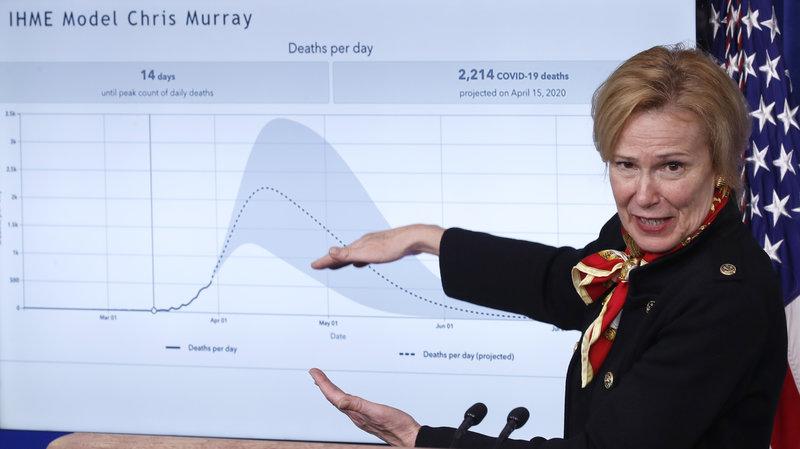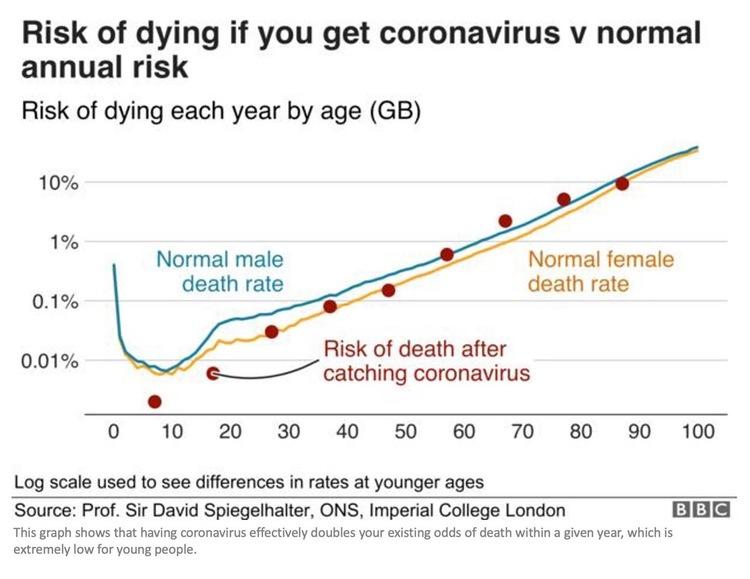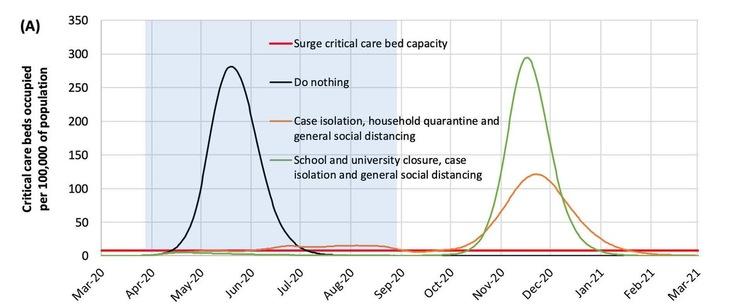Submitted by Yinon, Weiss, a tech entrepreneur, US nilitary veteran and bioengineer, via RealClearPolitics,
In the face of a novel virus threat, China clamped down on its citizens. Academics used faulty information to build faulty models. Leaders relied on these faulty models. Dissenting views were suppressed. The media flamed fears and the world panicked.
That is the story of what may eventually be known as one of the biggest medical and economic blunders of all time. The collective failure of every Western nation, except one, to question groupthink will surely be studied by economists, doctors, and psychologists for decades to come.

Reliance on Faulty Models
To put things in perspective, the virus is now known to have an infection fatality rate for most people under 65 that is no more dangerous than driving 13 to 101 miles per day. Even by conservative estimates, the odds of COVID-19 death are roughly in line with existing baseline odds of dying in any given year.

Yet we put billions of young healthy people under house arrest, stopped cancer screenings, and sunk ourselves into the worst level of unemployment since the Great Depression. This from a virus that bears a survival rate of 99.99% if you are a healthy individual under 50 years old (1, 2).
New York City reached over a 25% infection rate and yet 99.98% of all people in the city under 45 survived, making it comparable to death rates by normal accidents.
But of course the whole linchpin of the lockdown argument is that it would have been even worse without such a step. Sweden never closed down borders, primary schools, restaurants, or businesses, and never mandated masks, yet 99.998% of all their people under 60 have survived and their hospitals were never overburdened.
Why did we lock down the majority of the population who were never at significant risk? What will be the collateral damage? That is what this series will explore.
Experts took a measured approach early on
In early February the World Health Organization said that travel bans were not necessary. On Feb. 17, just a month before the first U.S. lockdown, Dr. Anthony Fauci, the longtime director of the National Institute of Allergy and Infectious Diseases said that this new strain of coronavirus possessed “just minuscule” danger to the United States. In early March the U.S. surgeon general said that “masks are NOT effective in preventing [the] general public from catching coronavirus.” As late as March 9, the day Italy started its lockdown, Dr. Fauci did not encourage cancellation of “large gatherings in a place [even if] you have community spread,” calling it “a judgment call.” NBA games were still being played.
So how did we go from such a measured tone to locking up 97% of Americans in their homes seemingly overnight?
Enter faulty assumptions and faulty models
China concealed the extent of the viral outbreak, which, if you believed its data, led many scientists to believe that 2% to 5% of all infected patients would die. This turned out to be off by a factor of 10, but academic epidemiologists have a history of wildly-off-the-mark doomsday predictions.

The March 16 report by Imperial College epidemiologist Neil Ferguson is credited (or blamed) with causing the U.K. to lock down and contributing to the domino effect of global lockdowns. The model has since come under intense criticism for being “totally unreliable and a buggy mess.”
This is the same Neil Ferguson who in 2005 predicted 200 million could die from the bird flu. Total deaths over the last 15 years turned out to be 455. This is the same Neil Ferguson who in 2009 predicted that 65,000 people could die in the U.K. from the swine flu. The final number ended up around 392. Now, in 2020, he predicted that 500,000 British would die from coronavirus.
more… https://www.zerohedge.com/markets/how-fear-groupthink-drove-unnecessary-global-lockdowns